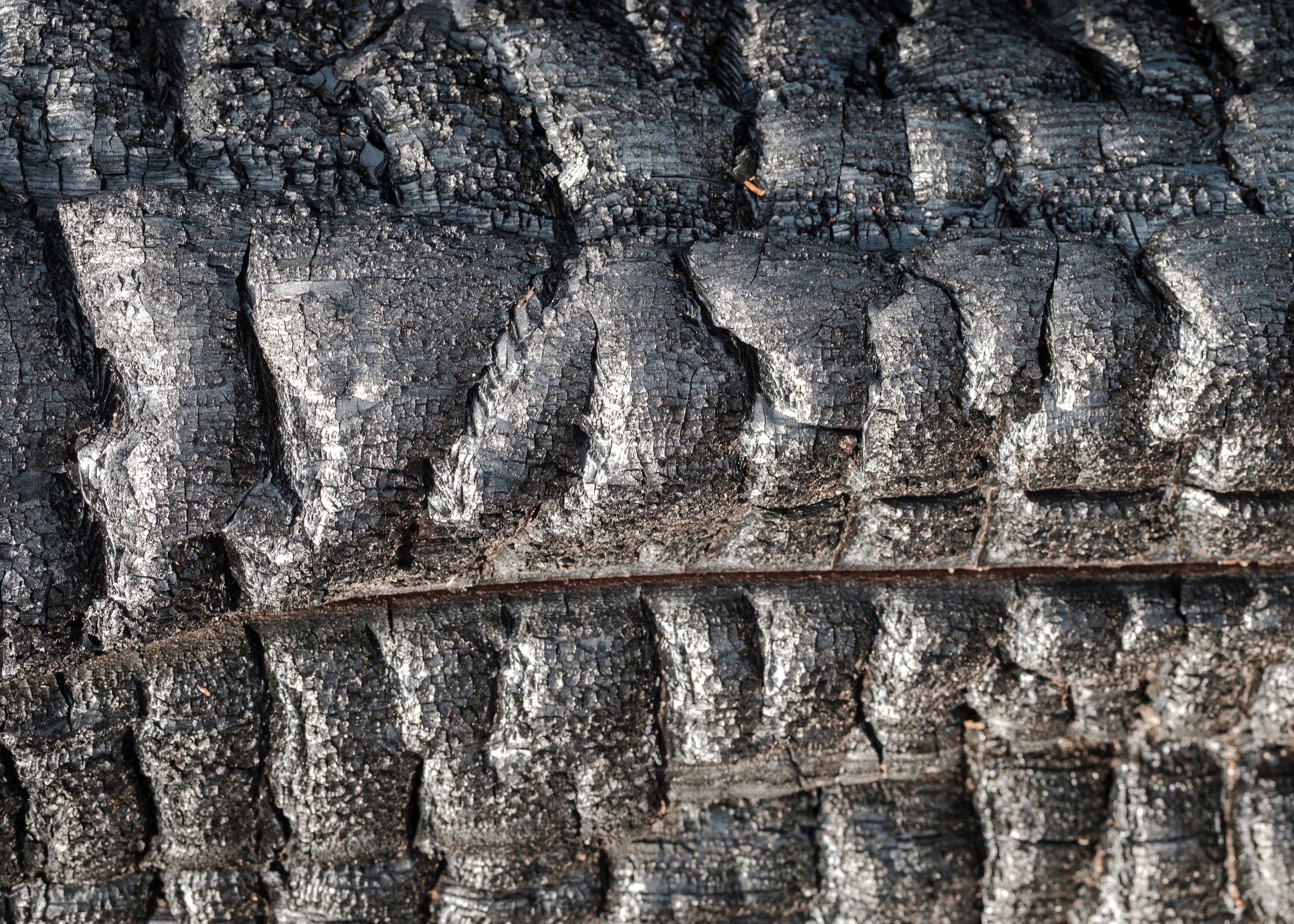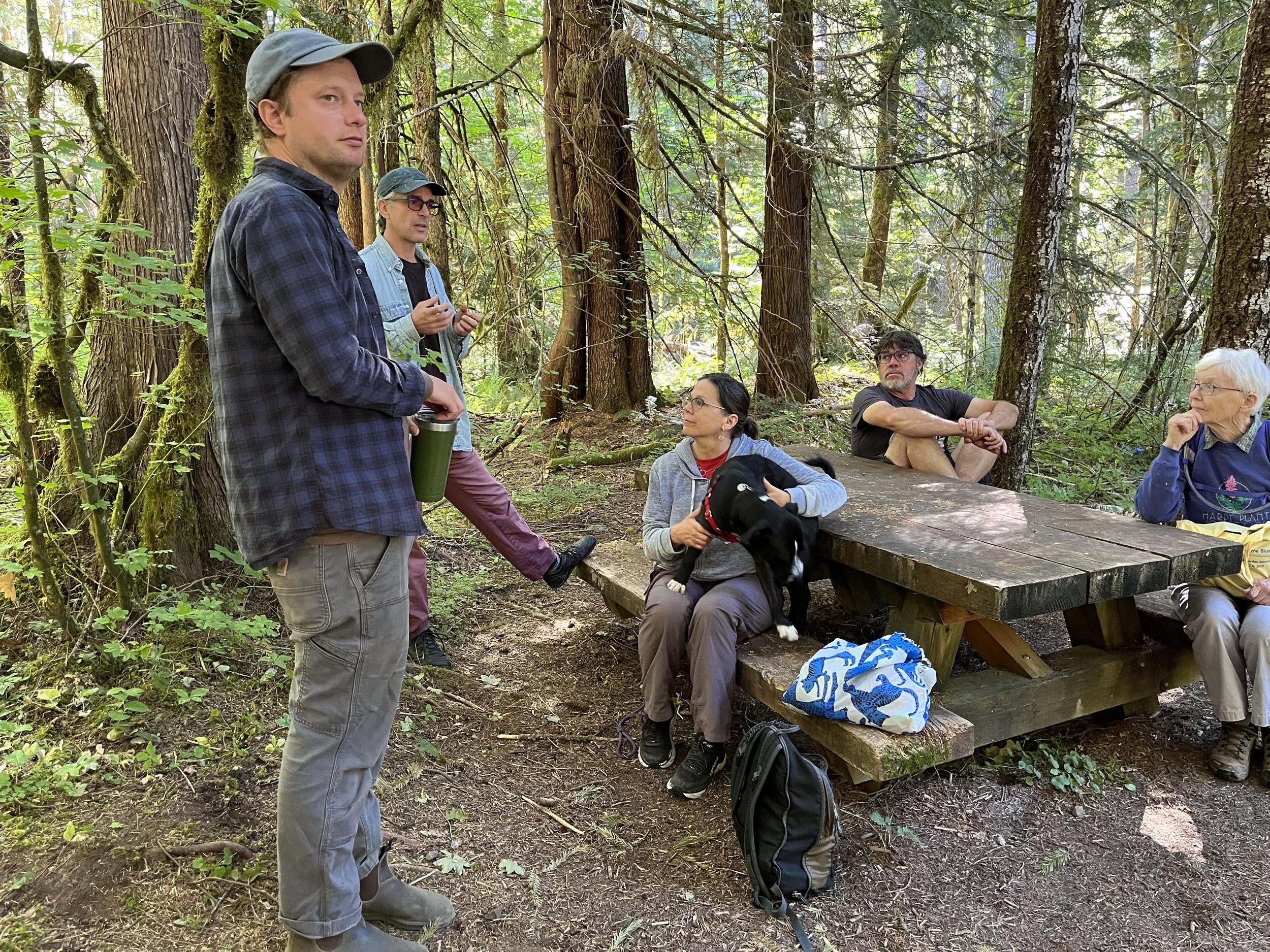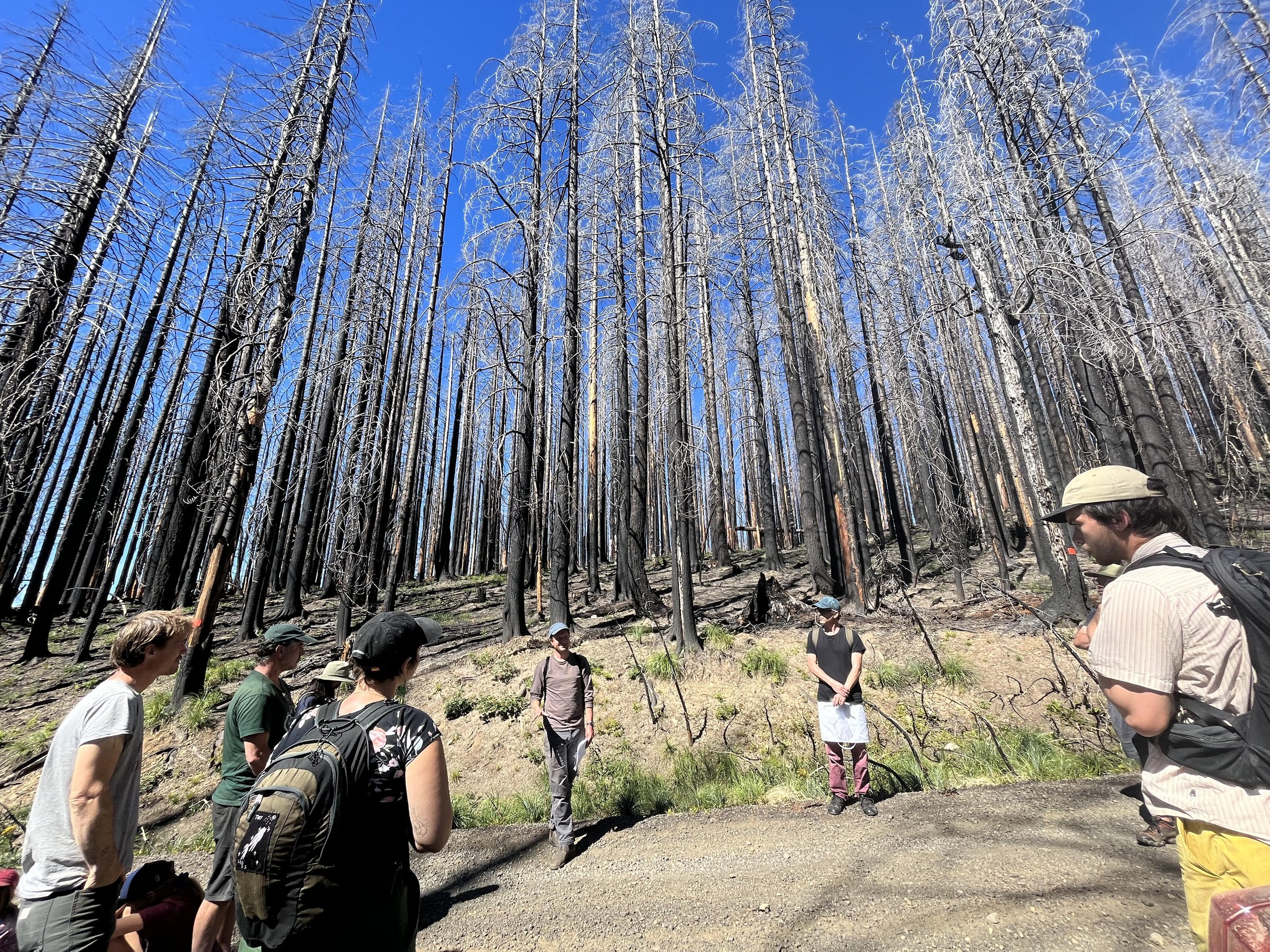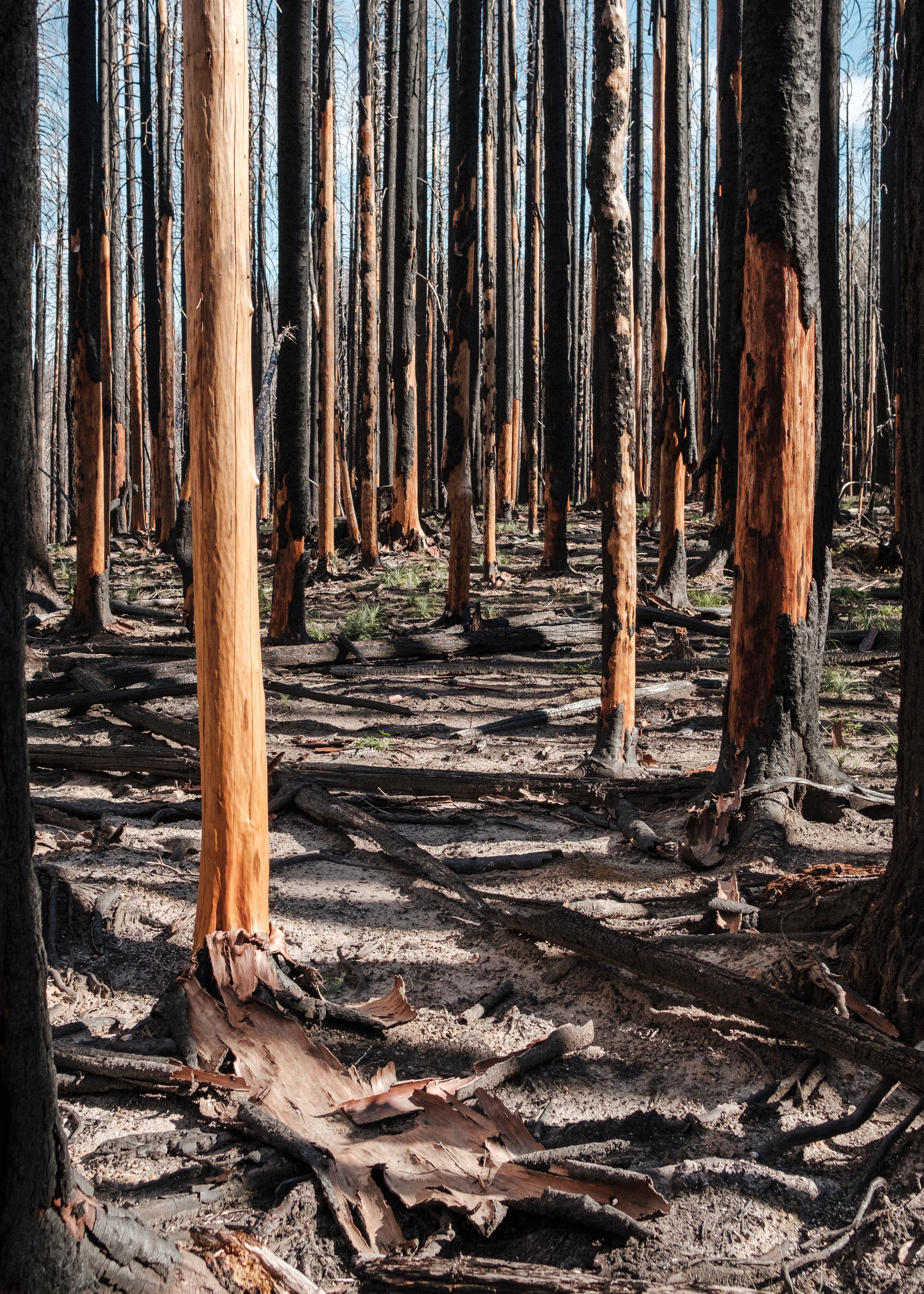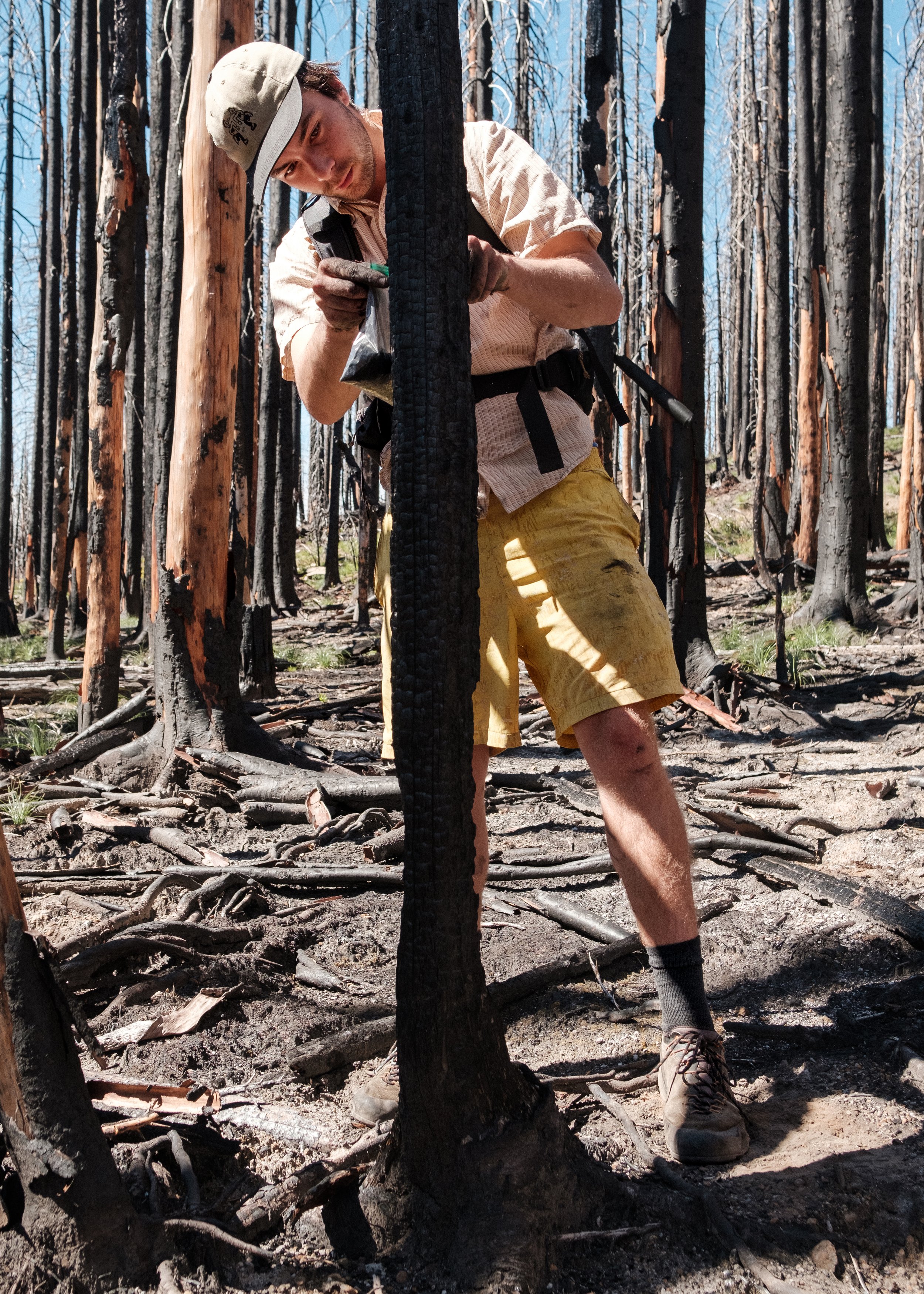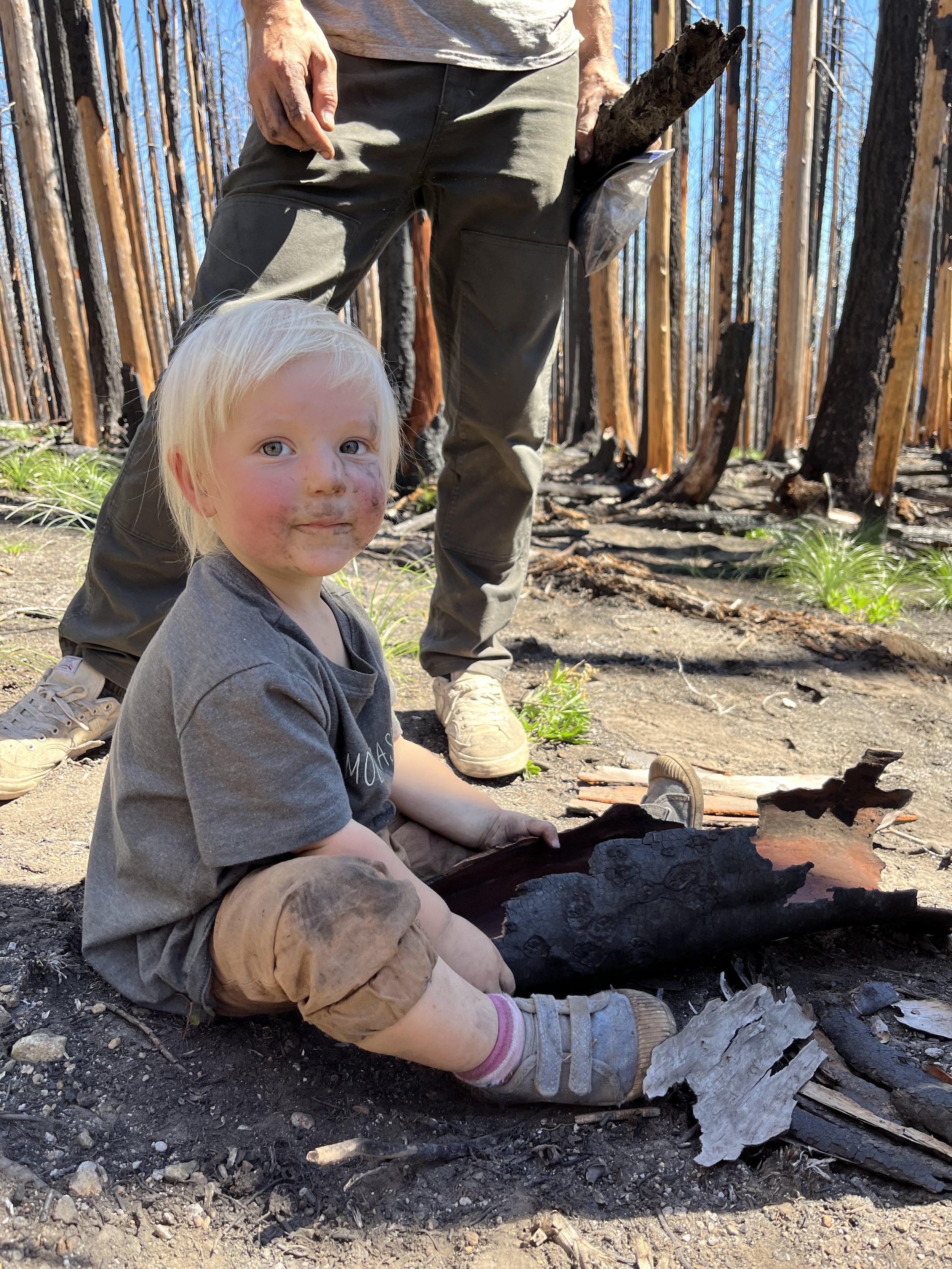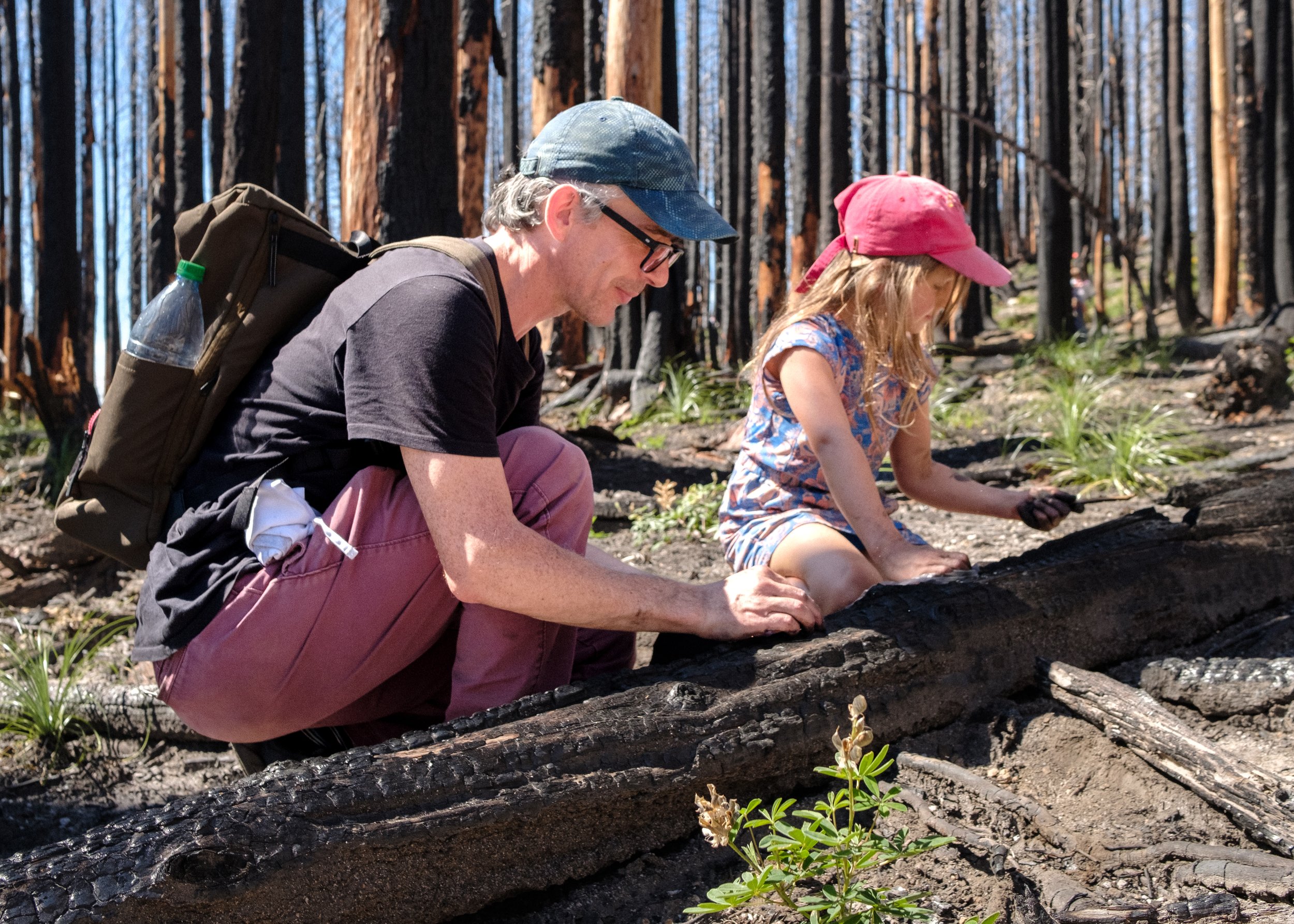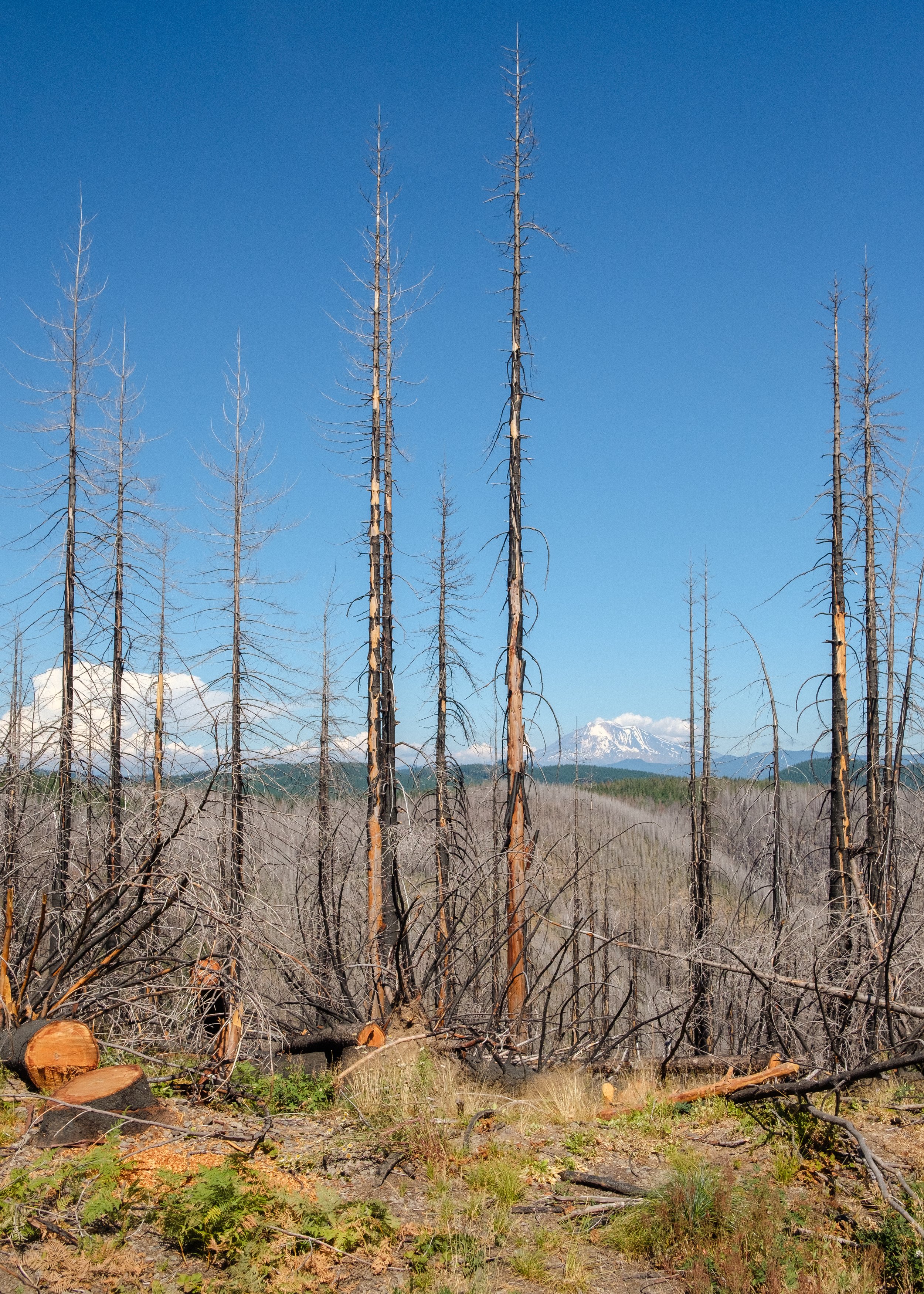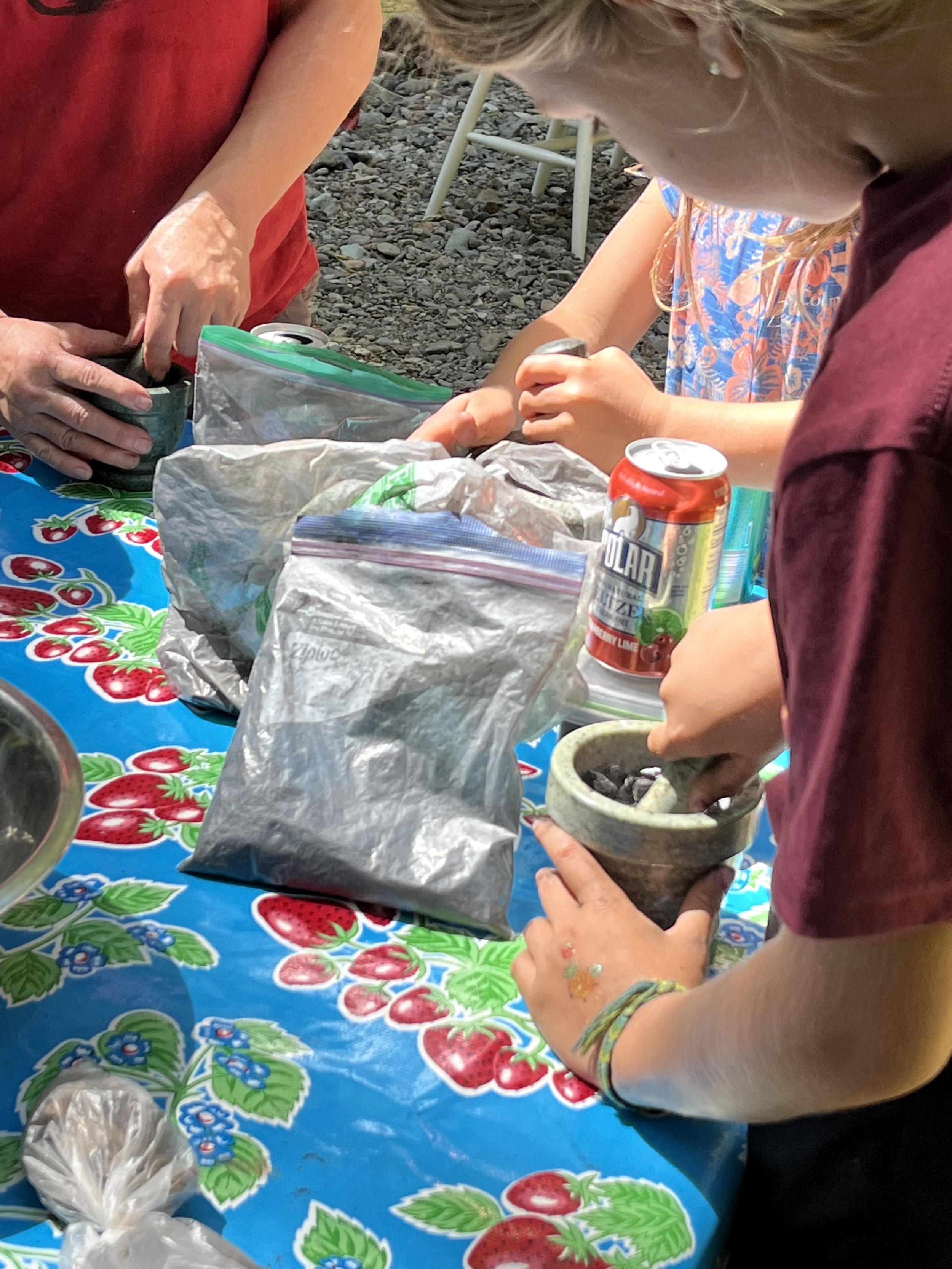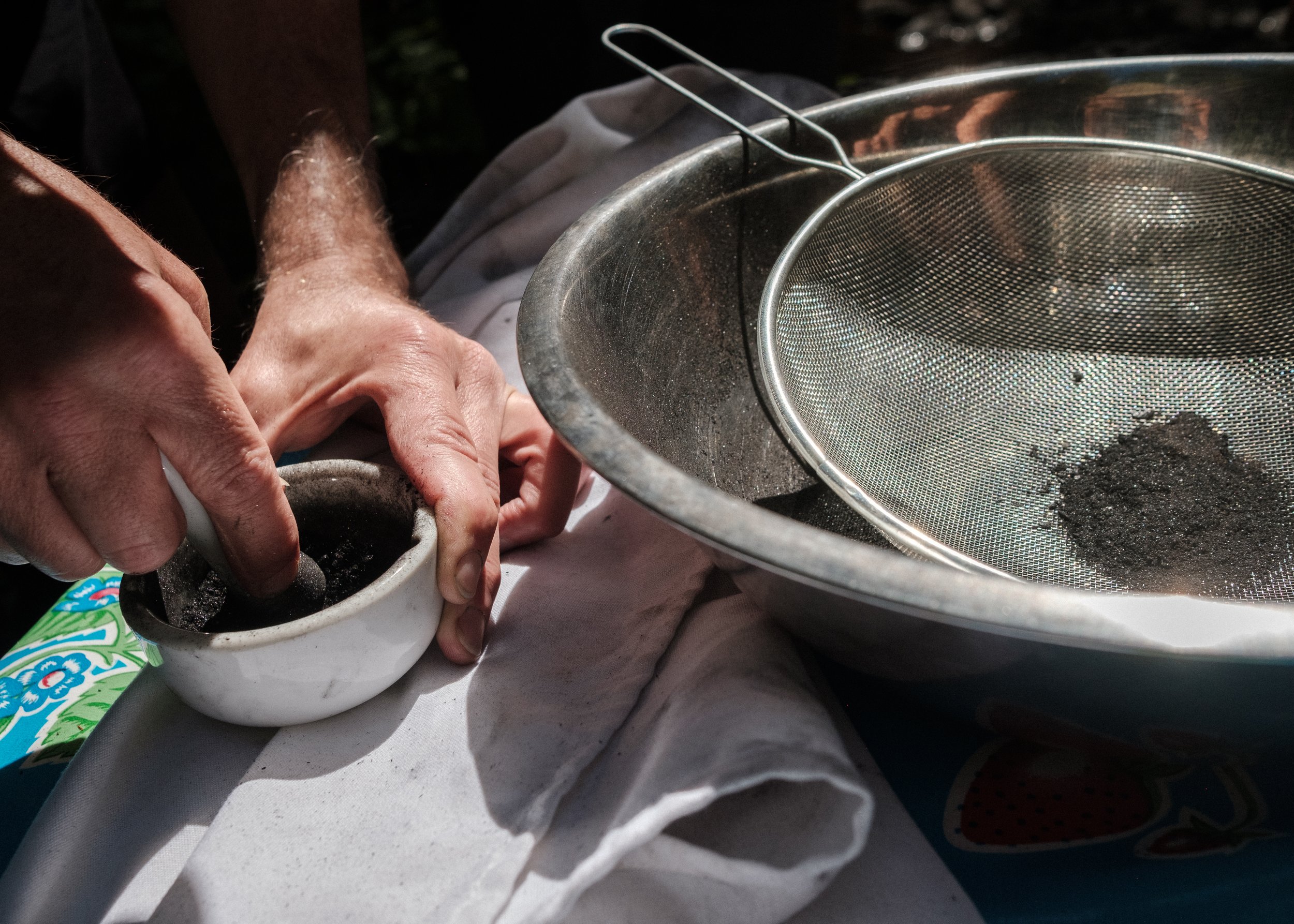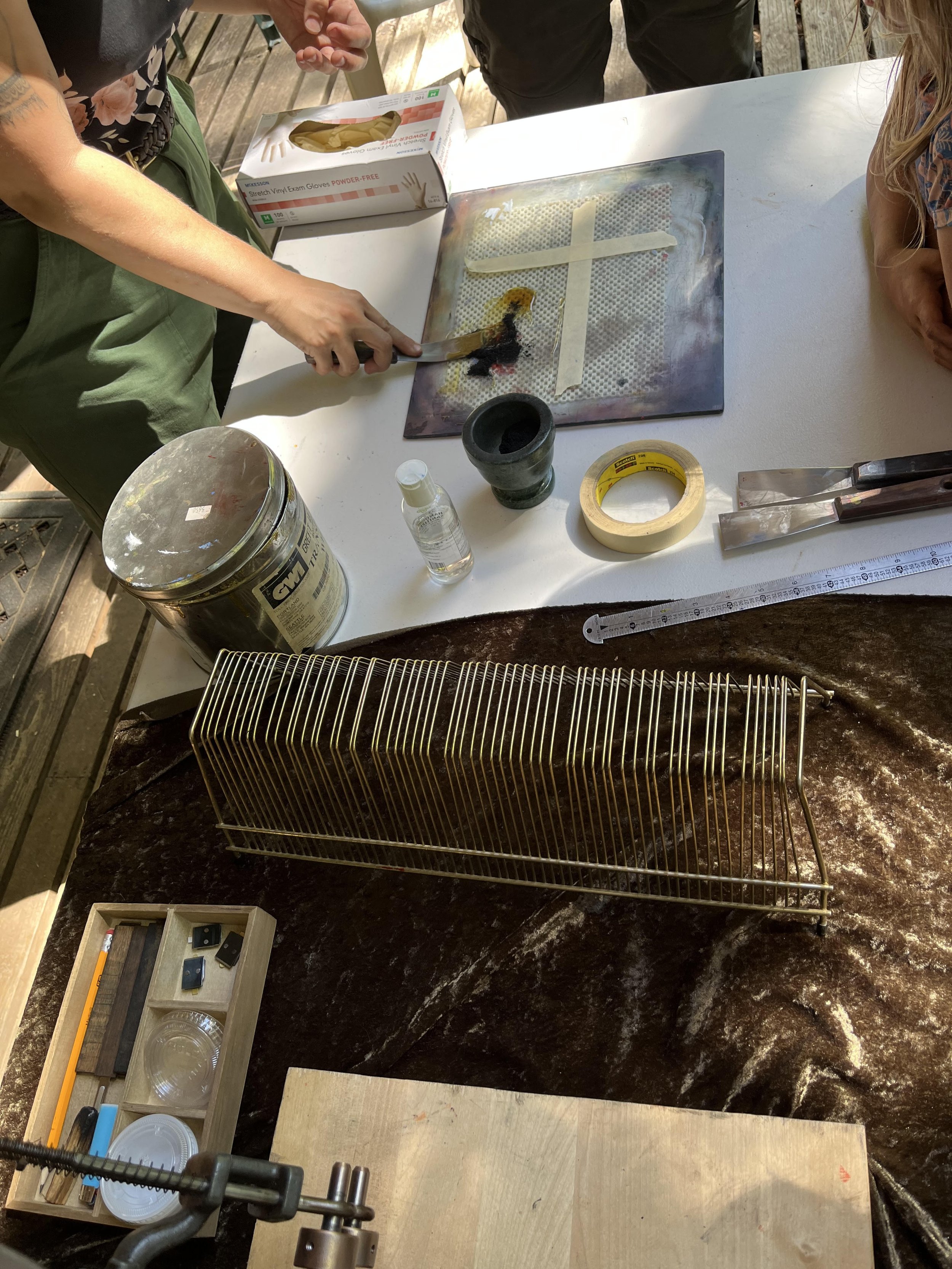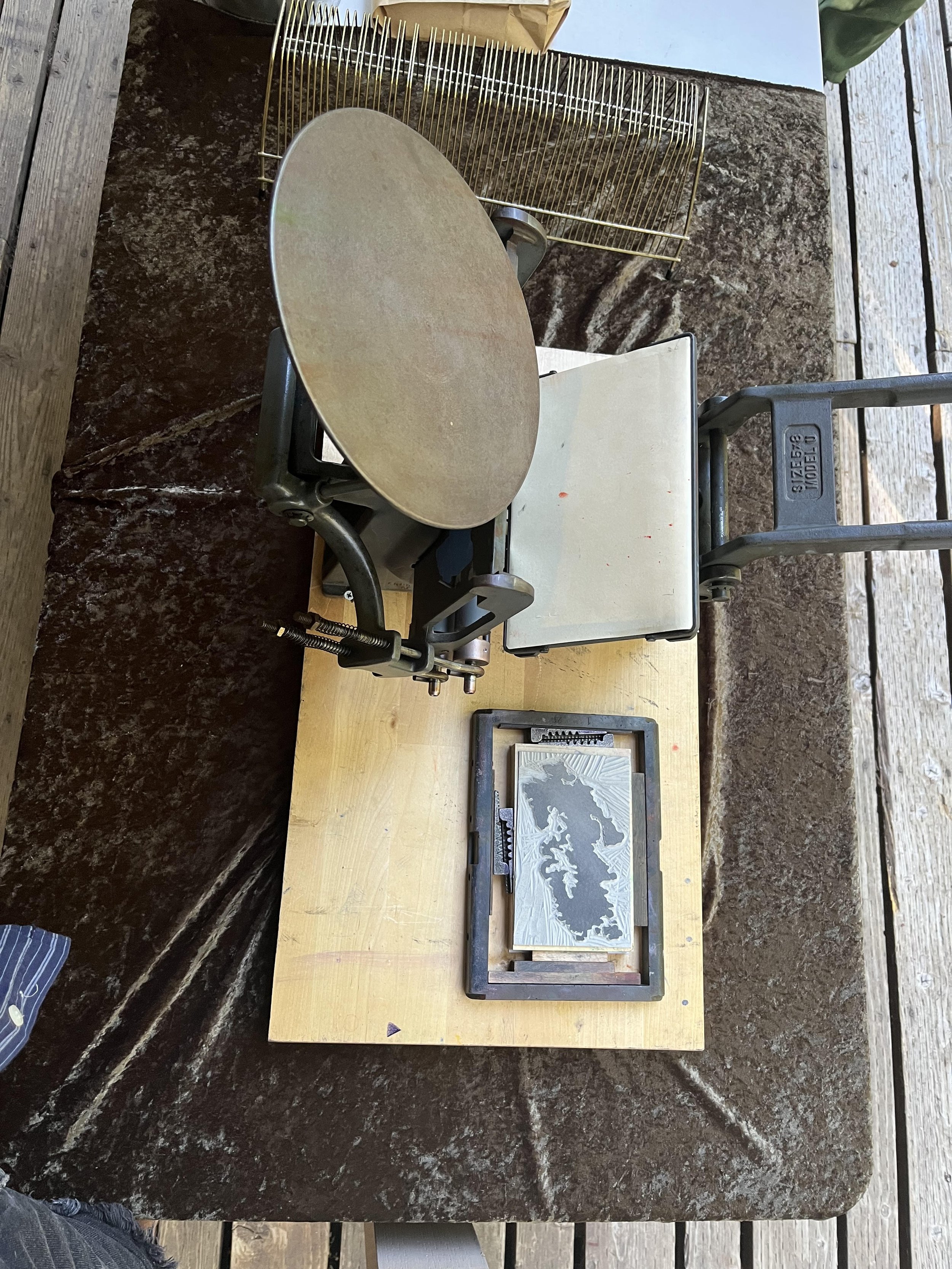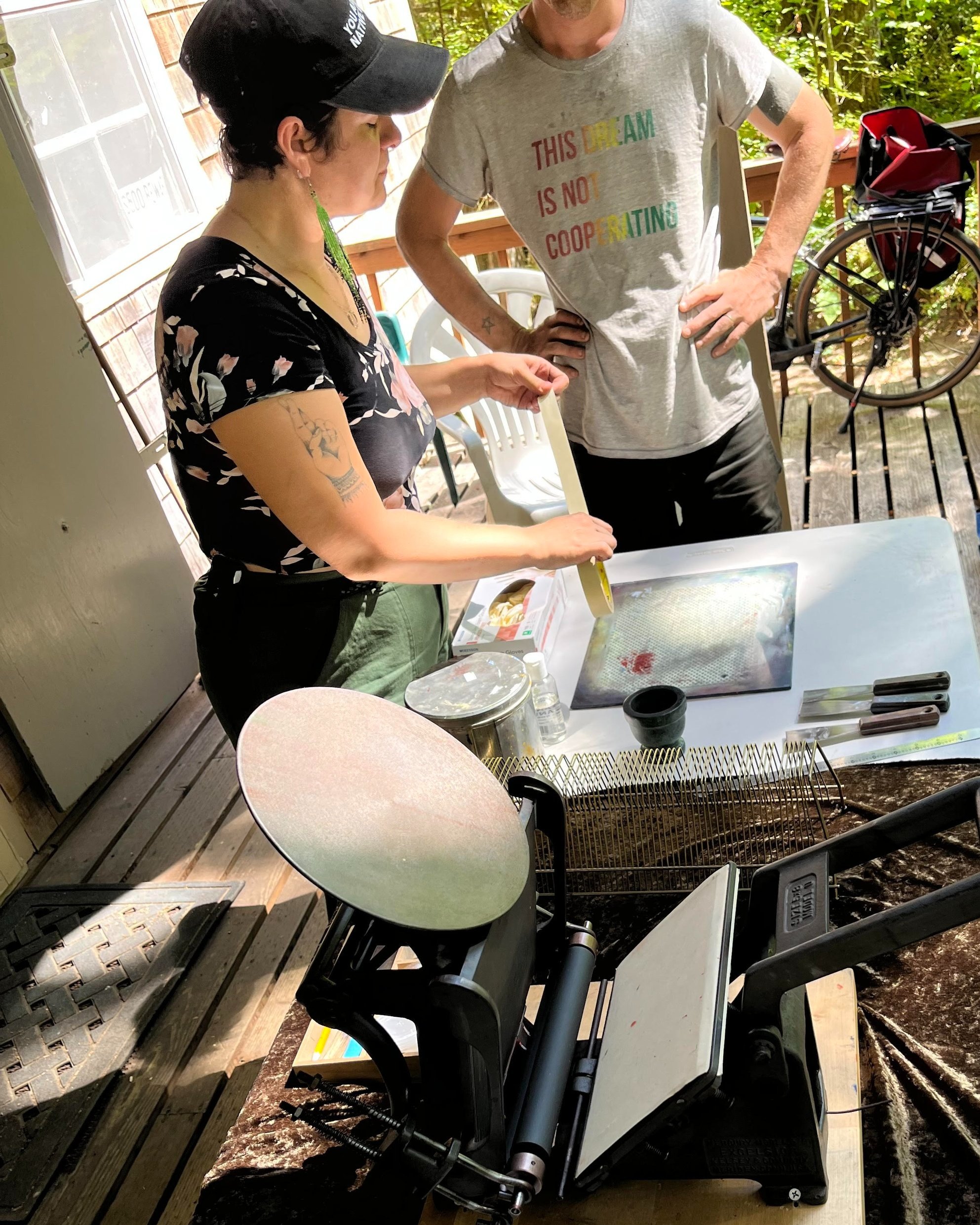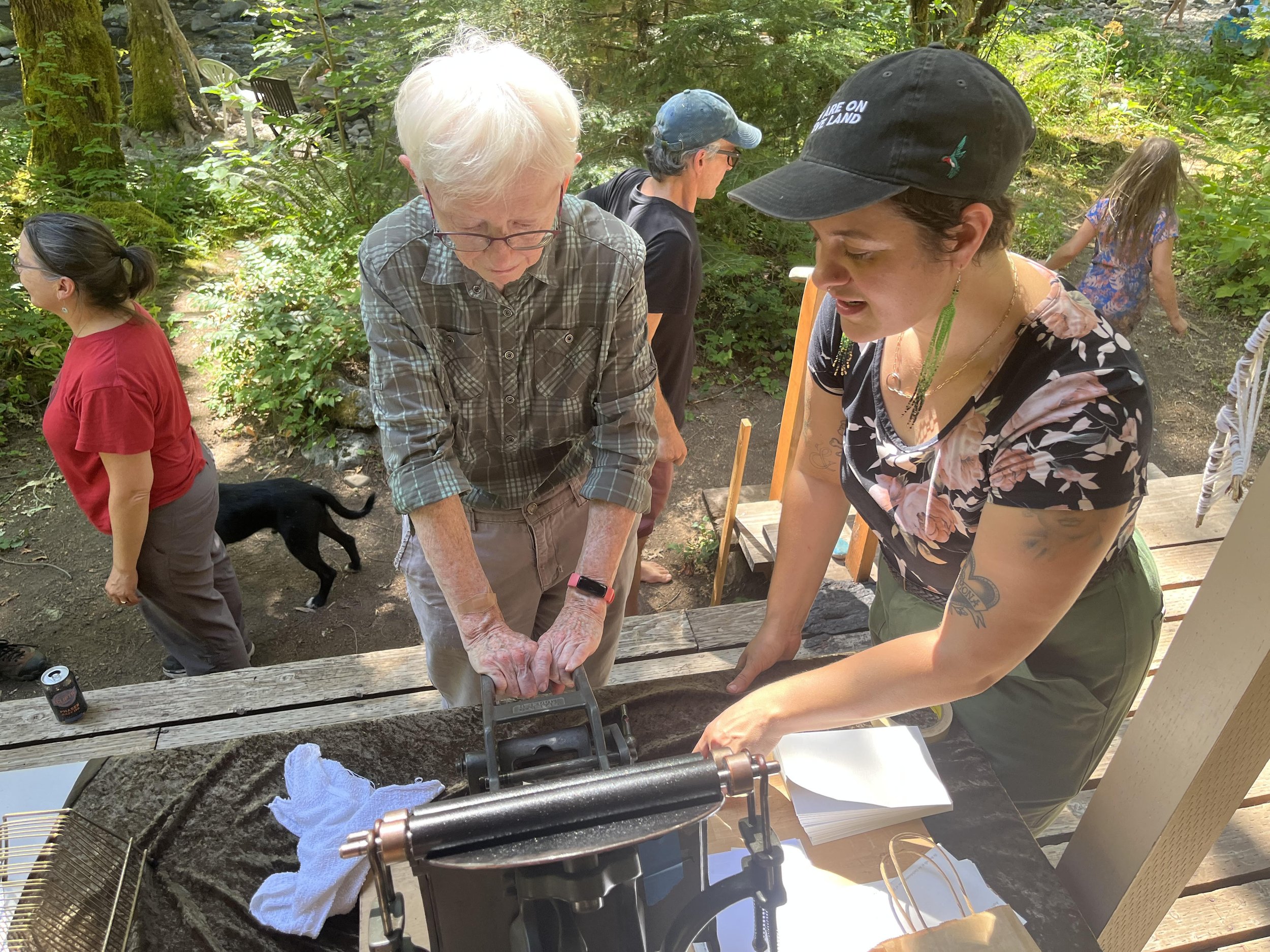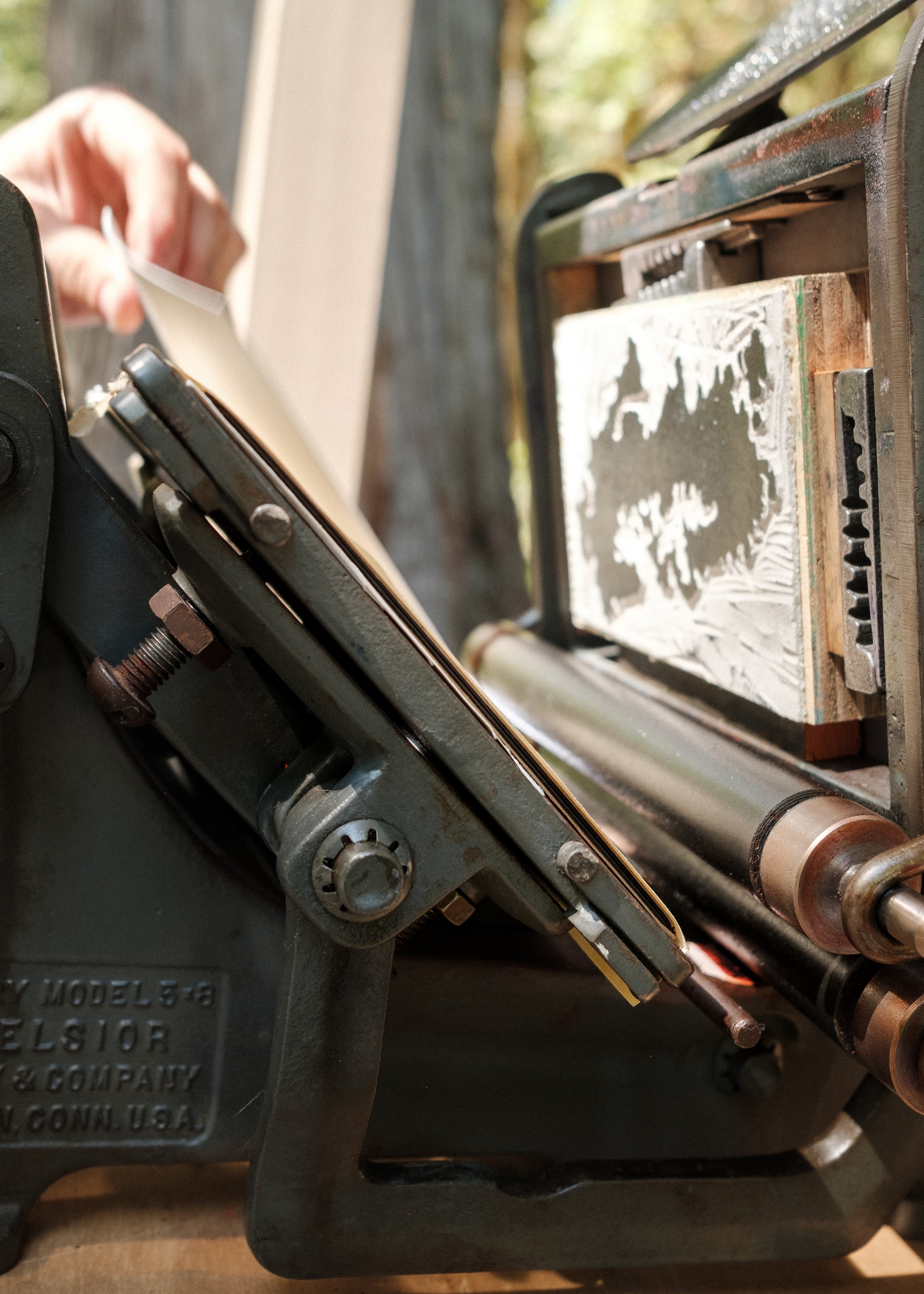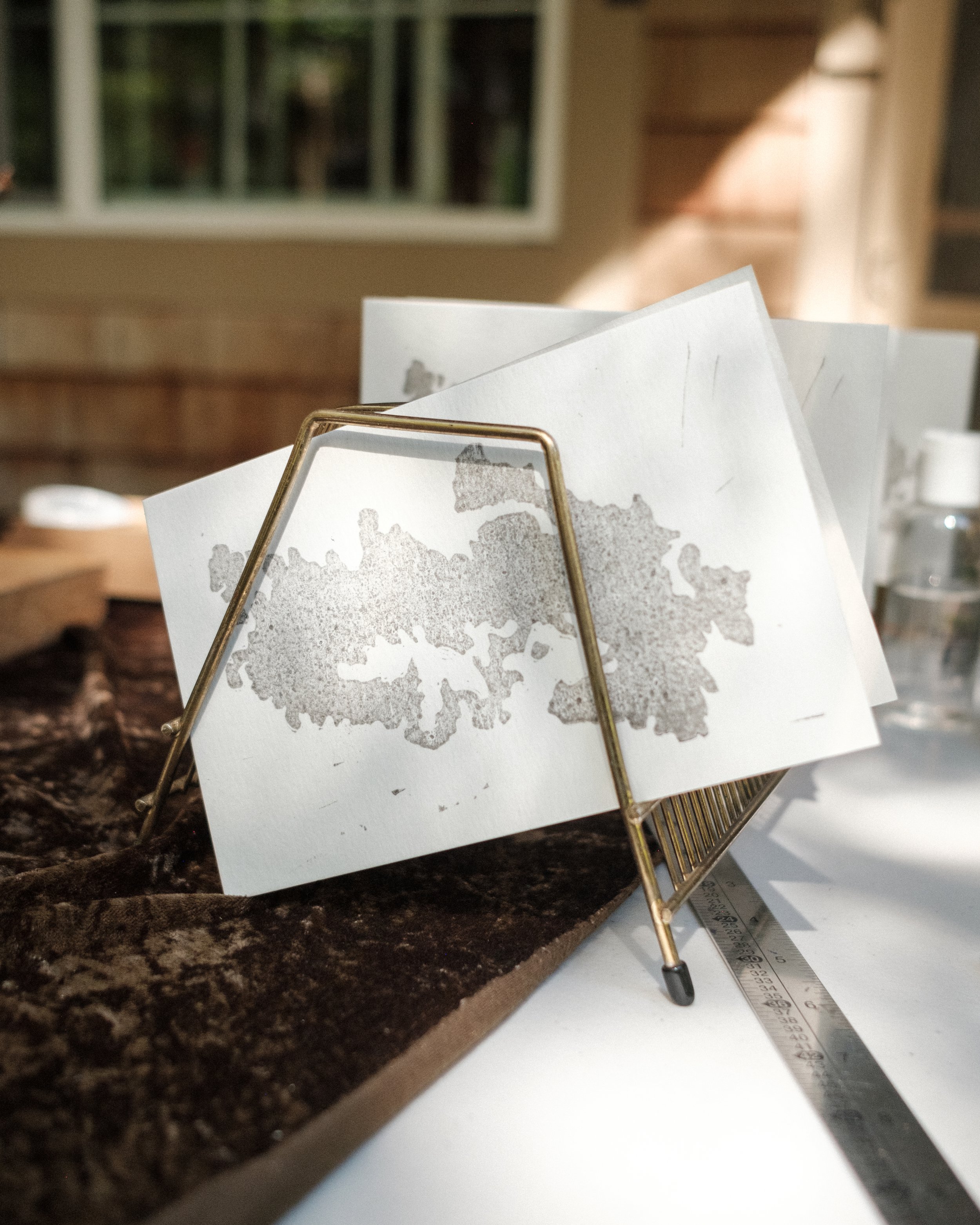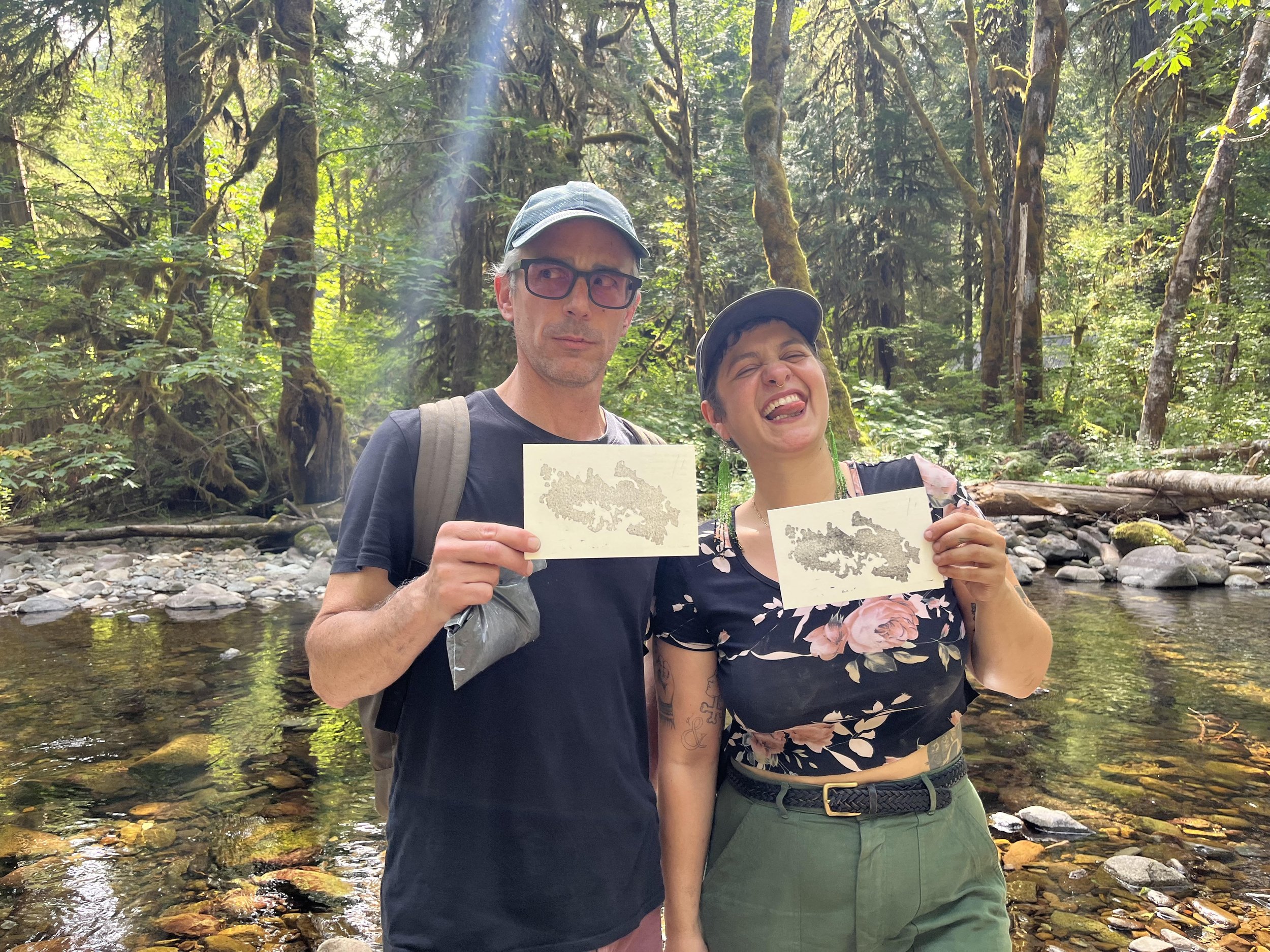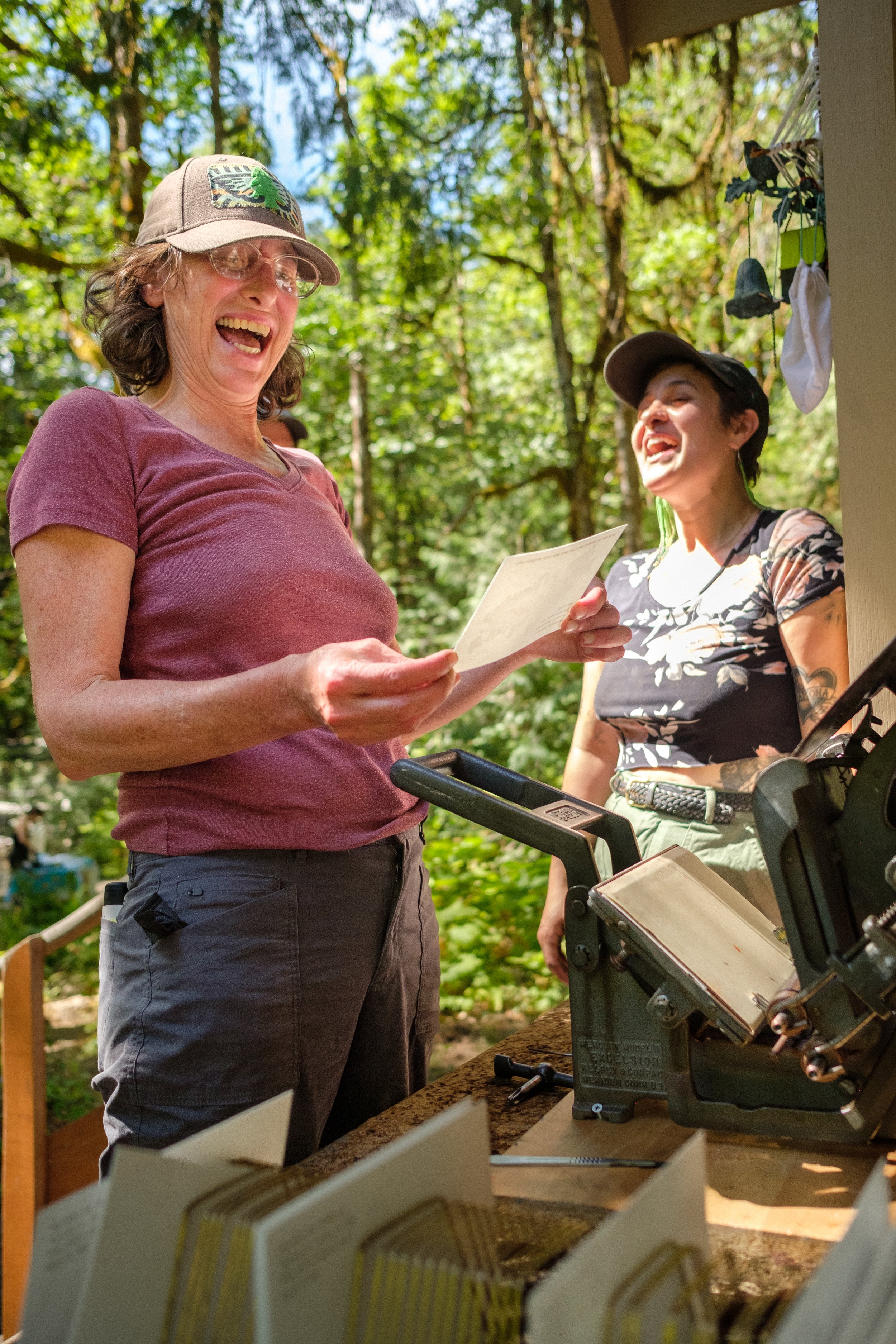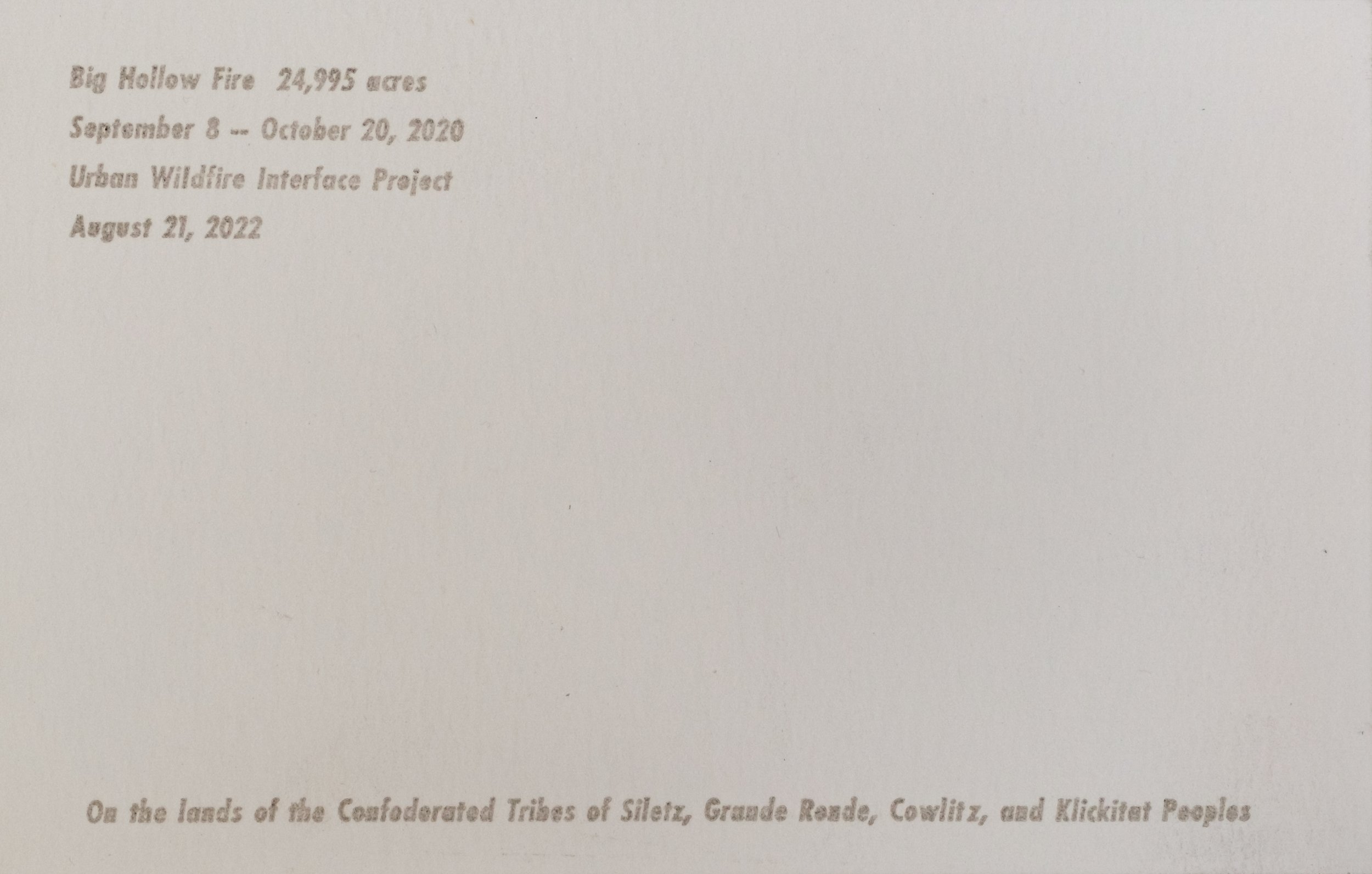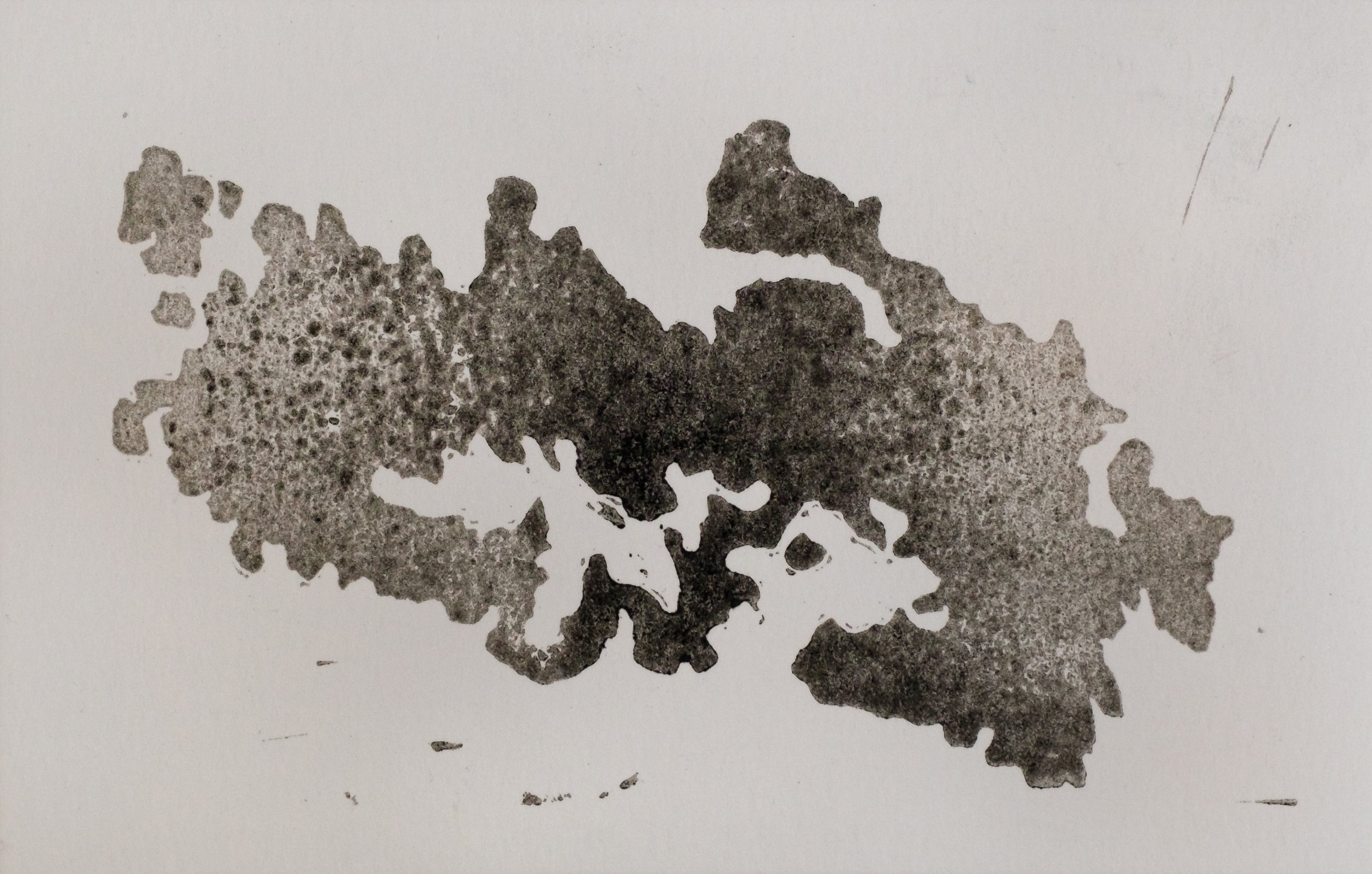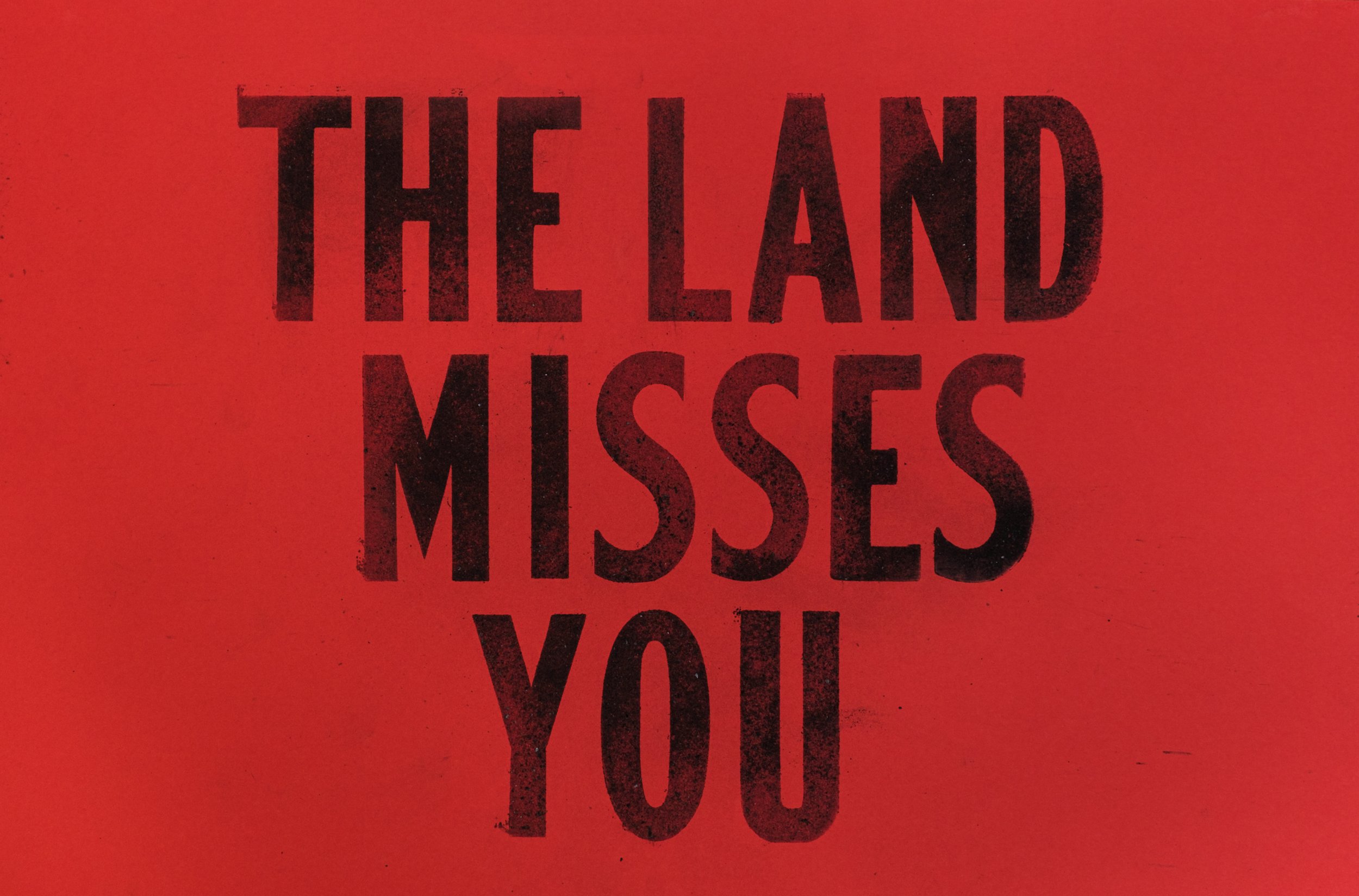Our time together was meant to to contain and process grief in the cabin community adjacent to the fire’s perimeter while also talking about the layers of white supremacy, Indigenous erasure, fire + cultural suppression, miseducation and commercial extraction that has created these high intensity fires.
After a guided discussion, we collected small samples of carbon from the burned bark. Together, we processed our collection into a fine powder to mix into printing ink. With a tabletop letterpress, we printed postcards of the burn perimeter map of the 2020 Big Hollow Fire on site, which burned concurrently with Oregon’s Labor Day fires.
It’s hard to tell from the photos, but the fires here burned to hot that the bark sloughed off the trees and lay across the incinerated soil like swaths of fabric.
And yet, burned forests are still beautiful. There were so many tufts of bear grass, fire week, stands of Klamath weed, spots of blue lupine and baby conifers already sprouting and seeding across the forest floor. This place will recover.
Urban Wildfire Interface, collaborative fire ecology hike and burn site visit between artists + ecologists alex wiseman, Michael Krochta, and daniela del mar and the Trapper Creek Forest Service cabin community, Washington Urban Wildfire Interface at Big Hollow Burn, Gifford Pinchot National Forest, serial collaborative project since 2021, carbon from wildfire burn sites, multimedia 2022.
Mix of photos by the artist, Eva Hankin and Benji.

